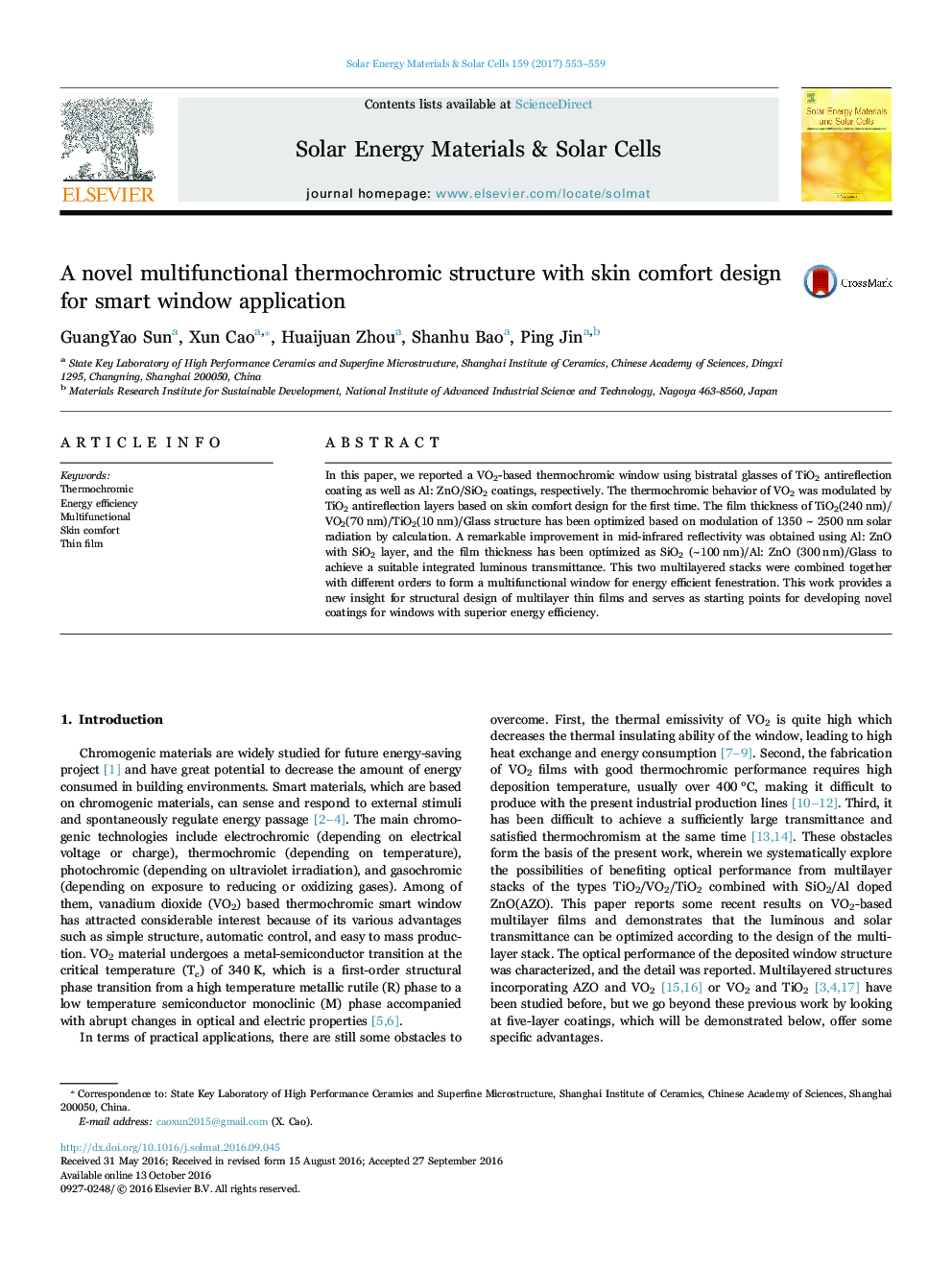| Article ID | Journal | Published Year | Pages | File Type |
|---|---|---|---|---|
| 6457588 | Solar Energy Materials and Solar Cells | 2017 | 7 Pages |
â¢Thermochromic VO2 was modulated by TiO2 with a TiO2(240 nm)/VO2(70 nm)/TiO2(10 nm)/Glass structure based on skin comfort design for the first time.â¢An optimized SiO2 (~100 nm)/Al:ZnO (300 nm)/Glass low-emission structure was computational simulated and deposited.â¢Smart window combining these two structure possesses the improved performance of 6.9% in solar modulating ability, >40% in integrated visible transmittance and >80% reflectivity in mid-infrared region.
In this paper, we reported a VO2-based thermochromic window using bistratal glasses of TiO2 antireflection coating as well as Al: ZnO/SiO2 coatings, respectively. The thermochromic behavior of VO2 was modulated by TiO2 antireflection layers based on skin comfort design for the first time. The film thickness of TiO2(240Â nm)/VO2(70Â nm)/TiO2(10Â nm)/Glass structure has been optimized based on modulation of 1350 ~ 2500Â nm solar radiation by calculation. A remarkable improvement in mid-infrared reflectivity was obtained using Al: ZnO with SiO2 layer, and the film thickness has been optimized as SiO2 (~100Â nm)/Al: ZnO (300Â nm)/Glass to achieve a suitable integrated luminous transmittance. This two multilayered stacks were combined together with different orders to form a multifunctional window for energy efficient fenestration. This work provides a new insight for structural design of multilayer thin films and serves as starting points for developing novel coatings for windows with superior energy efficiency.
